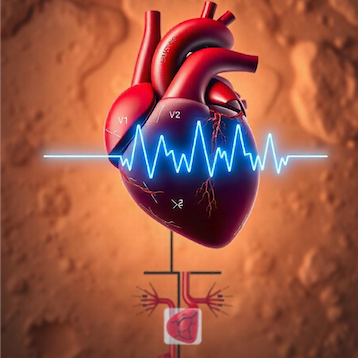Biological plausibility and implications of obesity associated valvular heart diseases

Published: November 5, 2024
Abstract Views: 2008
PDF: 485
Publisher's note
All claims expressed in this article are solely those of the authors and do not necessarily represent those of their affiliated organizations, or those of the publisher, the editors and the reviewers. Any product that may be evaluated in this article or claim that may be made by its manufacturer is not guaranteed or endorsed by the publisher.
All claims expressed in this article are solely those of the authors and do not necessarily represent those of their affiliated organizations, or those of the publisher, the editors and the reviewers. Any product that may be evaluated in this article or claim that may be made by its manufacturer is not guaranteed or endorsed by the publisher.
Similar Articles
- Kamilu M. Karaye, Idris Y. Mohammed, Hadiza Sa’idu, Naser A. Ishaq, Suleiman A. Balarabe, Jamilu Tukur, Tewogbade A. Adedeji, Olufemiwa N. Makinde, Rasaaq A. Adebayo, Prevalence of left ventricular dysfunction and relationship with serum selenium in apparently healthy pregnant women: results from the PEACE registry , Global Cardiology: Vol. 2 No. 2 (2024)
- Writing Task Force | iCARDIO-Alliance, Draft Document for Public Consultation: iCARDIO Alliance Global Implementation Guidelines on Heart Failure 2025 , Global Cardiology: Vol. 2 No. 4 (2024)
- Ahmad Shabbir, Laiba Yumn, Esha Khan, Mavacamten’s therapeutic impact: cardiac-specific myosin inhibition in obstructive hypertrophic cardiomyopathy , Global Cardiology: Vol. 2 No. 3 (2024)
- Amir Askarinejad, Erfan Kohansal, Soudabeh Shafiee Ardestani, Mohammadhossein Mozafarybazargany, Hamed Hesami, Amirreza Sabahizadeh, Seyed Abbas Pakmehr, Majid Haghjoo, Carvedilol versus metoprolol in preventing post-operative atrial fibrillation: a systematic review and meta-analysis , Global Cardiology: Vol. 2 No. 4 (2024)
- Andrew J.S. Coats, Global Cardiology issue highlights , Global Cardiology: Vol. 2 No. 2 (2024)
- Andrew J.S. Coats, Welcome to Global Cardiology , Global Cardiology: Vol. 1 No. 1 (2023)
You may also start an advanced similarity search for this article.

 https://doi.org/10.4081/cardio.2024.49
https://doi.org/10.4081/cardio.2024.49
















